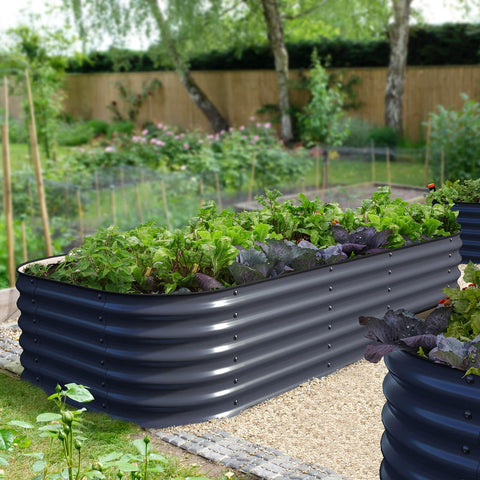Embrace Your Beloved Pets in Your Garden: Tips for Harmonious Coexistence with Garden Beds
Welcoming pets into your home does not necessarily mean sacrificing your garden beds as their new habitat. When we think of keeping animals away from our gardens, deer, squirrels, moles, and other wildlife often come to mind as potential culprits that can wreak havoc on our tender plants. However, they are not the only ones that can pose problems for your garden. Your furry companions, whom you warmly welcome, can be just as destructive as some visiting local wildlife. Imagine the frustration when your dog decides to dig up your freshly planted flower beds or your cat nibbles on your plants just because something looks enticing. Here are some tips on how to keep your pets safely away from your garden, so your furry friends don't become foes.

A quick and easy way to create a fence is using wire mesh.
Begin by positioning multiple stakes at uniform heights around the desired protective area, then encircle the space with wire mesh to create a perimeter. It may not be very noticeable until you wrap it around and only then realize your fence is sagging in the middle due to its weight and relative stability. To prevent sagging, add additional stakes to support those critical areas. Make sure to plan for at least one spot that can open like a gate; otherwise, you'll end up cutting off your own access to tend to the bulbs.
If the harsh metallic appearance spoils your garden aesthetics, you can opt for creating some enchanting garden fences using natural plants. The only downside is that if your pets are genuinely motivated to get to your precious plants, they might find their way over or through the fence.
Another option is to utilize materials that are already present in your yard, such as rose bushes or thorny branches on trees, to make sensitive areas uncomfortable for your pets. By strategically placing them along the perimeter, these arrangements serve as a natural deterrent, effectively preventing access to freshly sown, transplanted, or covered areas.
Utilizing Nature's Defense: Thorny Barriers
Sometimes, cats and dogs cause harm not through digging or chewing but by rolling and lying on your plants, adding their weight to delicate stems. Placing some low wooden stakes around the garden can entice your pets to go elsewhere. Think of them as the small strips placed on buildings and other structures to prevent birds from nesting or roosting. It won't harm them but will lead them to seek another spot.

Scent-based Repellents: Keeping Pests at Bay
If fencing alone doesn't seem to deter them and you still want to keep unwanted animals out of your garden, there are some scent-based animal repellents that may give wildlife second thoughts about entering your garden.
Coffee grounds, for example, are particularly effective in keeping cats away, and as a bonus, they can give a little boost to your soil.
While it might not bar Fido or Whiskers from entering, incorporating scent-based animal repellents can make visiting the garden a second thought for some wildlife.
When all else fails, embrace your pets and find ways to make them feel at home in your garden. If you have a dog that loves digging, provide them with a designated area where they can dig in the dirt to their heart's content. You can even loosen the soil and add some toys, like a dirt sandbox, to make it more enticing. If your cat enjoys digging up your flower beds, place a stone or brick at the edge of the bed to deceive them. They won't dig too far and will move on to another spot, hopefully leaving your garden undisturbed.
Everyone loves their pets, but it's easy to understand why you might not want them interfering with your garden. These tips are just a few different ways you can guide them to where they should be and let your garden grow undisturbed. You'll be happier, and so will they.
